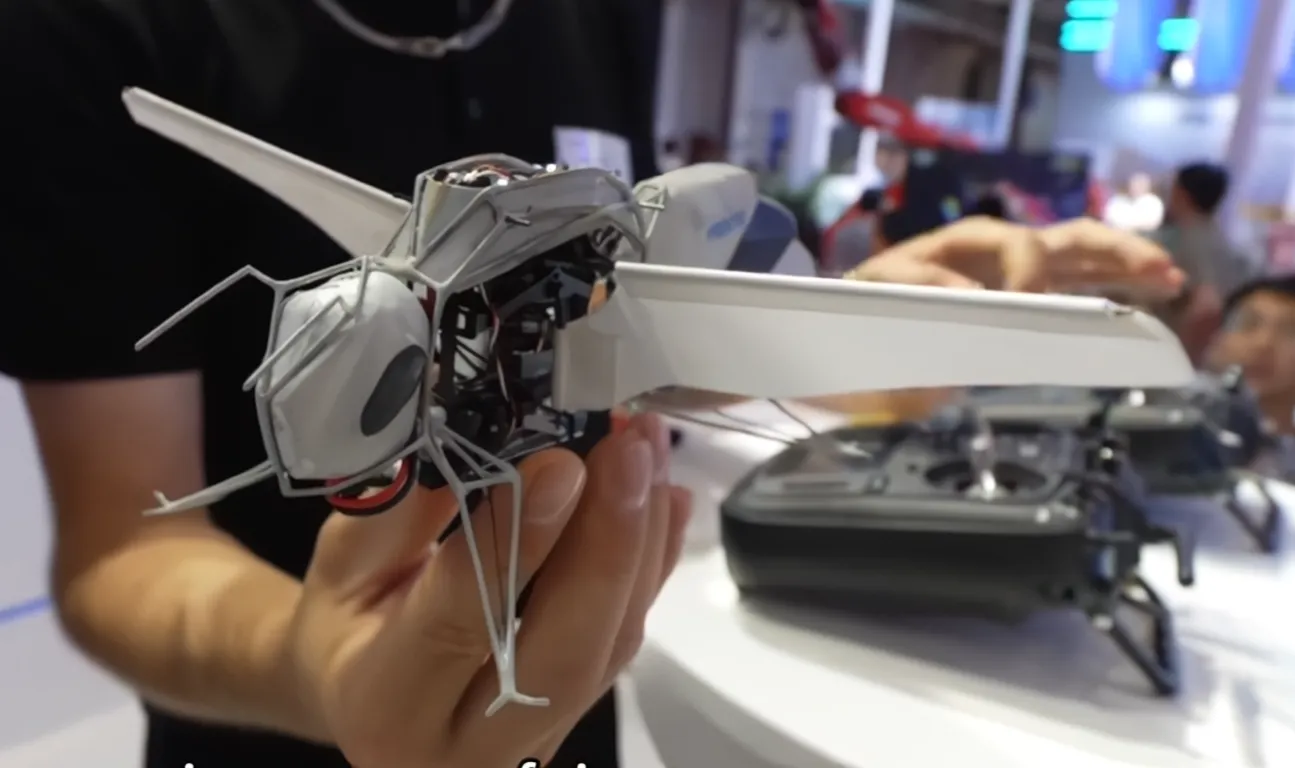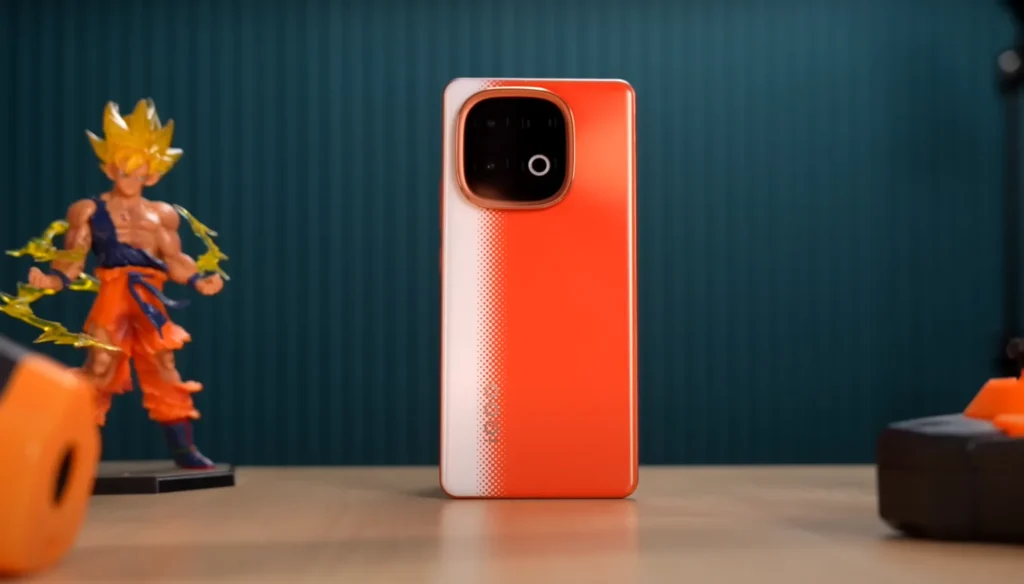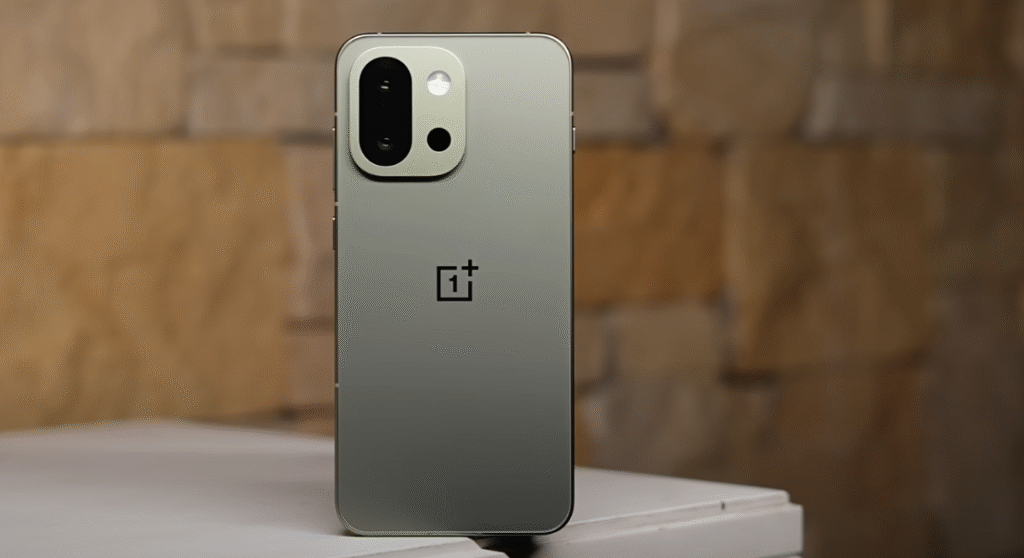At the 2025 World Robot Conference in Beijing there is a new sound broke through all the noise a faint buzz. I was standing under spotlights, confetti flying around, but my eyes just stopped at a tiny, buzzing figure. It was a 34 g robotic bee, and to be honest, I was pretty skeptical at first. I didn’t expect much. I’ve seen so many ugly micro-drones that crash into demo tables that I knew their limitations or at least I thought so. But this tiny machine… it almost made me forget that it was a machine, not a real creature that buzzes, can sting and gracefully ignores traffic rules.
Technology always moves forward, but this? It seems like a paradigm shift that was hidden right in front of our eyes.
How Does the 34 g Robotic Bee Actually Fly Like the Real Deal?
Now let us talk about work. Biometric flight, which used to be about academic dreams and suspected labs, has finally landed in the agile and wild. A 34g robotic bee is a debt of engineering for their amazing agility that’s to the point of passion: a light, 3D printed body (German specs, if you want to know), lighter carbon fibers, and wings made of special foam, and wings made of special foam and more than the plastic drone kit. Each part of it is made for the mastery of micro aerial vehicles (MAV).
Those who monitor the development of flapping-wing robots, and I sincerely hope that you will do this, it is a unique thing for them. It only has to flutter the wings – not a rotor, no noise propellers. Looking at the demo of the herd, I almost lost count: six, sometimes ten these bionic pests were almost fluttering in full coordination. It is very different from robots that look impressive until a fan turns on. The control board on the bee works hard-stabilizing and guiding stabilizing and guidance that allows it to fly fast, stay in the air, or even “dancing”, if someone wants to do a mischief.
What Is Biomimetic Flight? Real Bees, Robo-Bee, and the MAV Frontier
Frankly, biomimetic flight in micro aerial vehicles is tech’s attempt to cheat nature, stealing millions of years’ worth of evolution and jamming it into grams of carbon and foam. But the 34 g robotic bee is not just a tribute; it is the first time I have seen such aplomb mixed with actual real-world viability at scale. Engineers are cribbing insect neurology, wing flexures, and even the subtle delays in muscle response—emulating asynchronous muscle dynamics so that robo-bees can “think” about flapping, not just flap blindly.
Why does this matter? Aside from the obviously absurd spectacle (yes, it is a bit absurd to watch a robot bee perform double aerial flips), it means that future micro-drones will not just be fragile toys or niche surveillance devices—they will be lifelike, robust, and possibly… ubiquitous.
At the Robotics Conference: How Does the 34 g Robotic Bee Compare?
Robotics expos are mostly places where engineers talk shop and the rest of us wonder if coffee-pouring robots are ever going to improve. But this year, insect-inspired robotics was front and center. A few years ago, MAVs weighed many times more and would barely cross the booth without needing CPR. Even the best flapping-wing robot (looking at you, MIT) hovered for dozens of seconds—nice, but not exactly ready to pollinate an orchard. This 34 g robotic bee flies with a poise that bounces between adorable and terrifying. And unlike many ballyhooed prototypes, the demo swarm navigated tight corners, hovered in place, and—get this—landed on a branch of faux flowers with convincing grace.
Some robots tried to box or dance (good fun, but not quite newsworthy). The bee-shaped MAV, meanwhile, brought real teeth to the conversation about what comes next for micro-drone innovation.
Swapping Bees for Bots: The Future of Pollination?
You know what’s exhausting? Watching headlines claim that robots will soon save the world. But here, there’s a quiet hope: the 34-gram robotic bee may just be the godsend farmers need to stave off pollinator crises. Real bees, wonderful as they are, face nettlesome threats—pesticides, monocultures, and climate weirdness. Micro-drones inspired by natural pollination—mini-MAVs that behave like bees—could be programmed for targeted crop walks. This isn’t science fiction. Trials in places like Singapore and Australia have already put bug-sized pollinator robots to the test. Not perfect, but promising. Imagine glasshouse tomatoes pollinated with robotic consistency, no cough, no sneeze, just a reliable buzz.
And as vertical farming and urban greenhouses spread, the role for insect-inspired robotics only grows. Good news for those who think pollination is just one of those jobs that should have a solid Plan B.
Micro-Drone Innovation: Where Are We Headed?
Let’s be real: the future of pollination is being rewritten one byte at a time. The MAV-land gurus are talking about cyborg insects, bio-bots and deep learning for flight patterns. Maybe future flapping wing robots will pollinate and monitor plant health, scan for diseases or adapt in real time.
Will robo-bees soon swarm wild fields or stay in the lab? Hard to say. There are ethical dilemmas here—what if robot pollinators become as common as drones in city parks?—but for now, excitement trumps fear. It’s not a solution but an opening shot in how bioengineering can tackle big problems in food and biodiversity.
The Verdict on the Robo-Bee: Why This Is not Just Another Gimmick
Well, nobody is claiming that millions of natural bees will be replaced by the 34 g robotic bee. However, I found myself cheering for it while I saw that demonstration wings blurring, swarm moving as one. This has the ability to change the paradigm since biomimetic flight is a future toolkit rather than just cool engineering.
You might end yourself caring about this small robot whether you’re a science geek, investor, or just a tomato eater. It might soon be everywhere. Think: anyplace a small, nimble flier can go, including smart farms, disaster locations, and even space exploration.
Seriously. This is the kind of progress that feels good. What if the next time you see a bee at the window you pause, half wondering if it’s silicon or stinger?
Enough about my opinion. What do you think? Can the 34g robotic bee really make a dent in real world pollination – or are we tilting the balance of nature too far? Comment below (or wild theories). Let’s start a conversation that goes beyond buzzwords.












Leave a Reply
You must be logged in to post a comment.